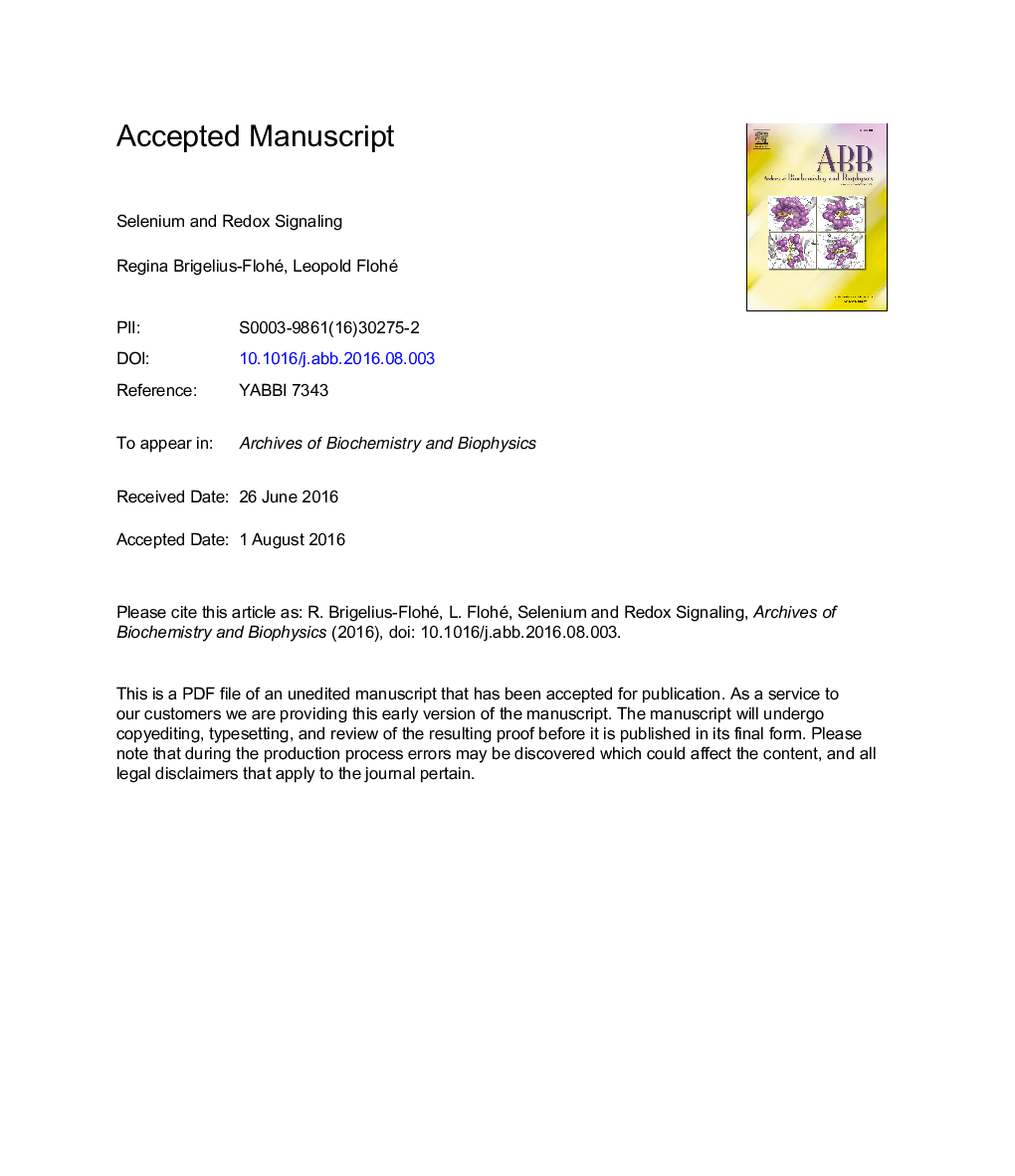| Article ID | Journal | Published Year | Pages | File Type |
|---|---|---|---|---|
| 5504439 | Archives of Biochemistry and Biophysics | 2017 | 31 Pages |
Abstract
Selenium compounds that contain selenol functions or can be metabolized to selenols are toxic via superoxide and H2O2 generation, when ingested at dosages beyond requirement. At supra-nutritional dosages various forms of programmed cell death are observed. At physiological intakes, selenium exerts its function as constituent of selenoproteins, which overwhelmingly are oxidoreductases. Out of those, the glutathione peroxidases counteract hydroperoxide-stimulated signaling cascades comprising inflammation triggered by cytokines or lipid mediators, insulin signaling and different forms of programmed cell death. Similar events are exerted by peroxiredoxins, which functionally depend on the selenoproteins of the thioredoxin reductase family. The thiol peroxidases of both families can, however, also act as sensors for hydroperoxides, thereby initiating signaling cascades. Although the interaction of selenoproteins with signaling events has been established by genetic techniques, the in vivo relevance of these findings is still hard to delineate for several reasons: The biosynthesis of individual selenoproteins responds differently to variations of selenium intakes; selenium is preferentially delivered to privileged tissues via inter-organ trafficking and receptor-mediated uptake, and only half of the selenoproteins known by sequence have been functionally characterized. The fragmentary insights do not allow any uncritical use of selenium for optimizing human health.
Related Topics
Life Sciences
Biochemistry, Genetics and Molecular Biology
Biochemistry
Authors
Regina Brigelius-Flohé, Leopold Flohé,
